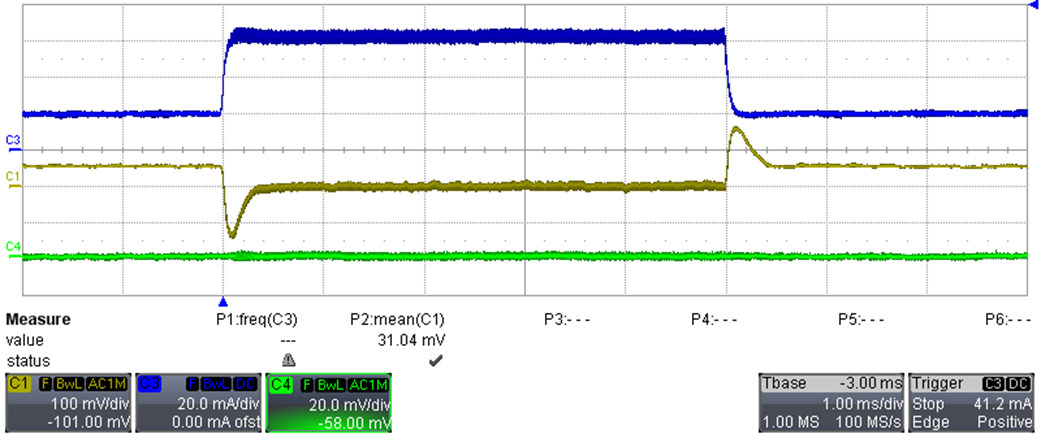TIDT336 may 2023
3.3 Load Transients
During load transients, the outputs of the board were measured by supplying the converter at 24 VDC while the load on 24 VOUT was switched between 20 mA and 60 mA; the load on 3.3 VOUT was constant at 15 mA. For all waveforms the bandwidth limit of the oscilloscope was set to 20 MHz.

|
C1: 24 VOUT (100 mV / div) C3: IOUT 24 VOUT (20 mV / div) C4: 3.3 VOUT (20 mV / div) 1 ms / div) |
Figure 3-6 Load Transient